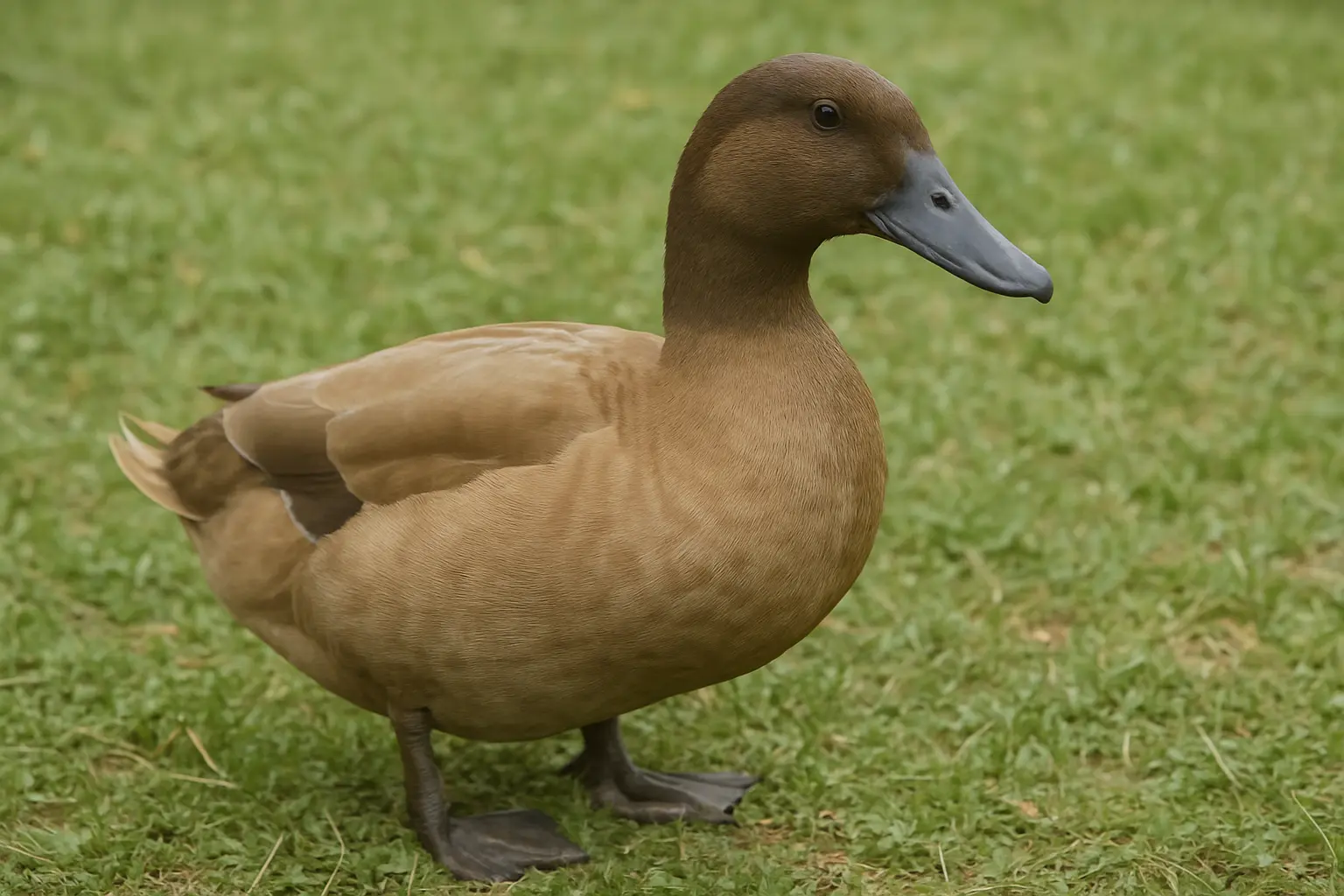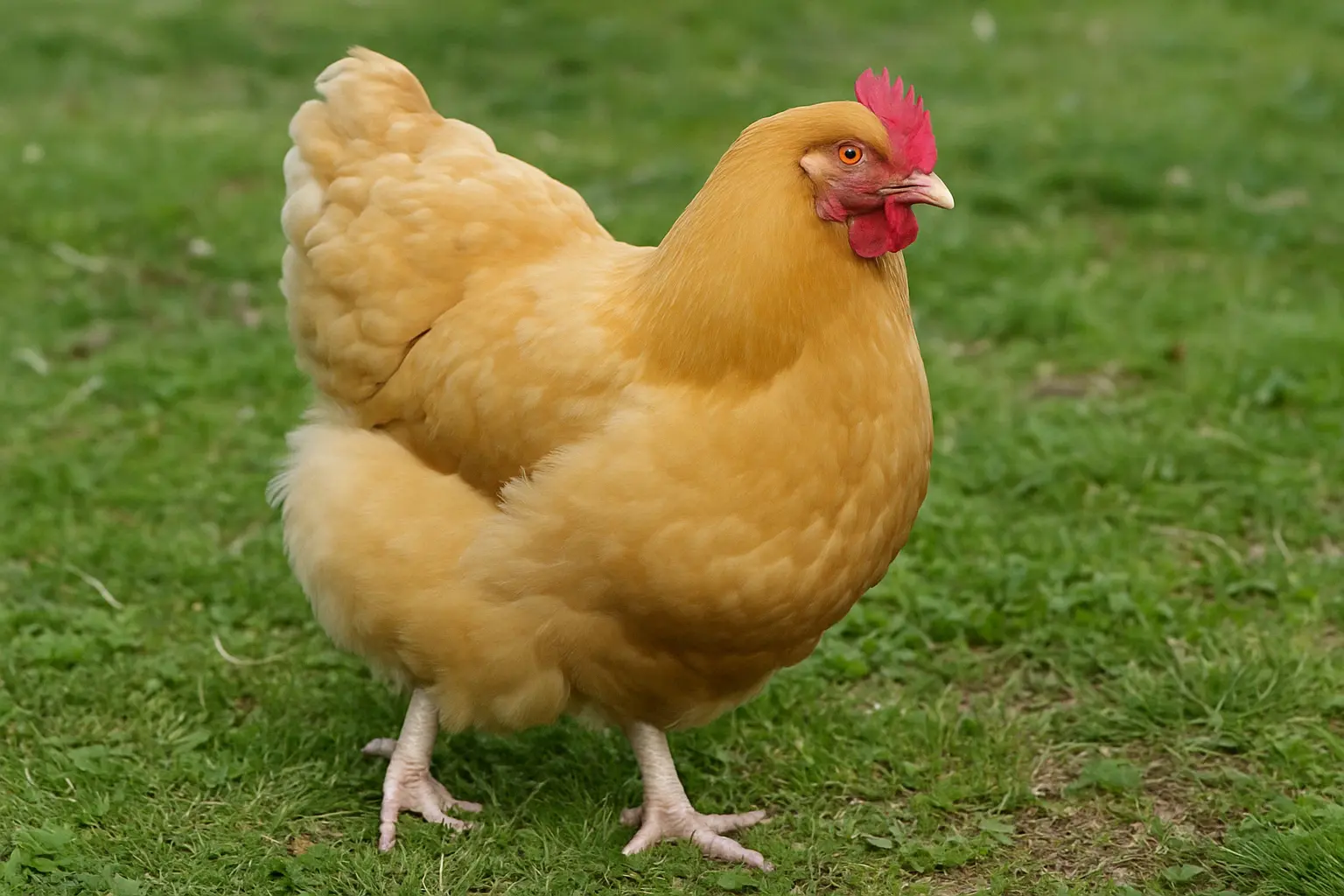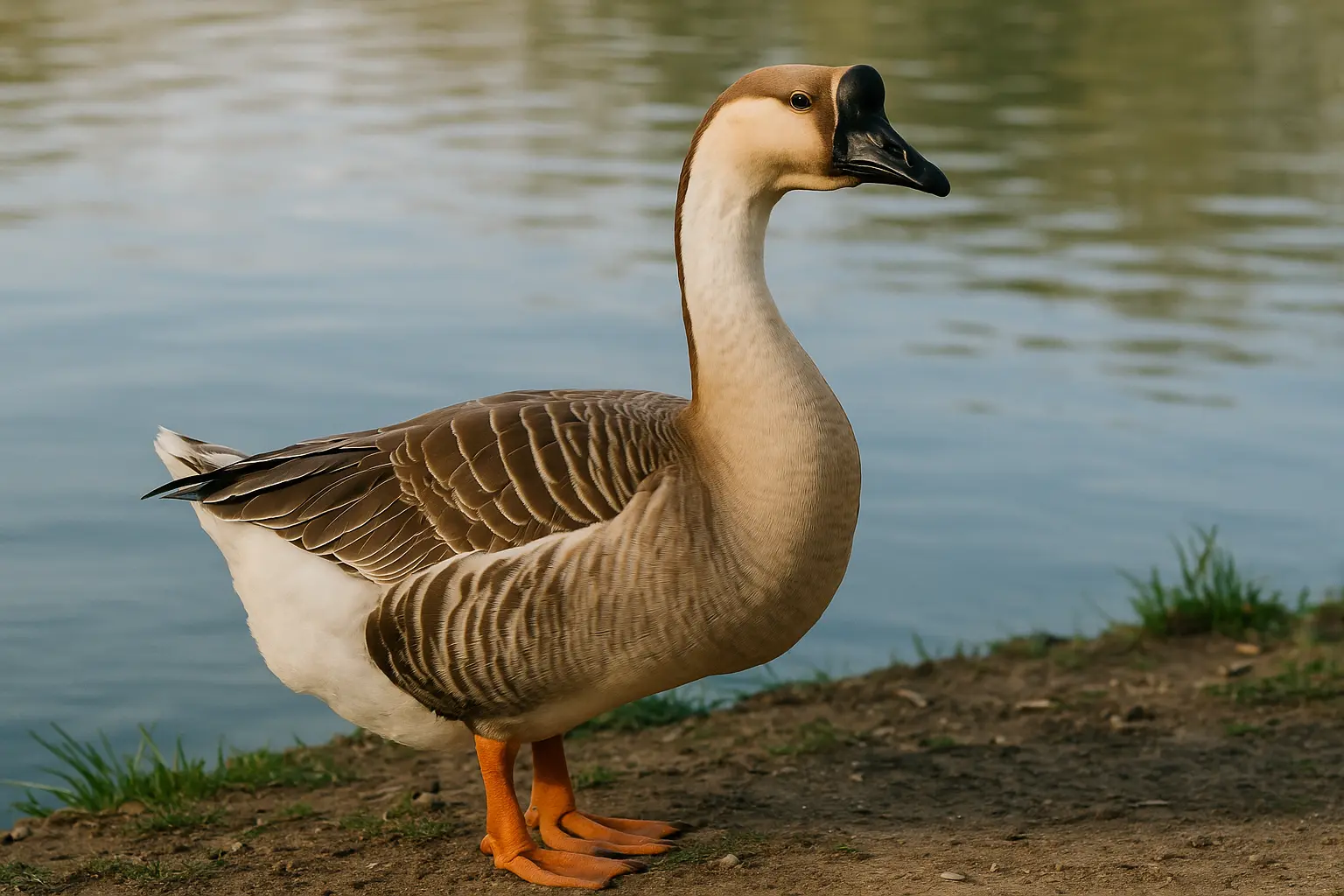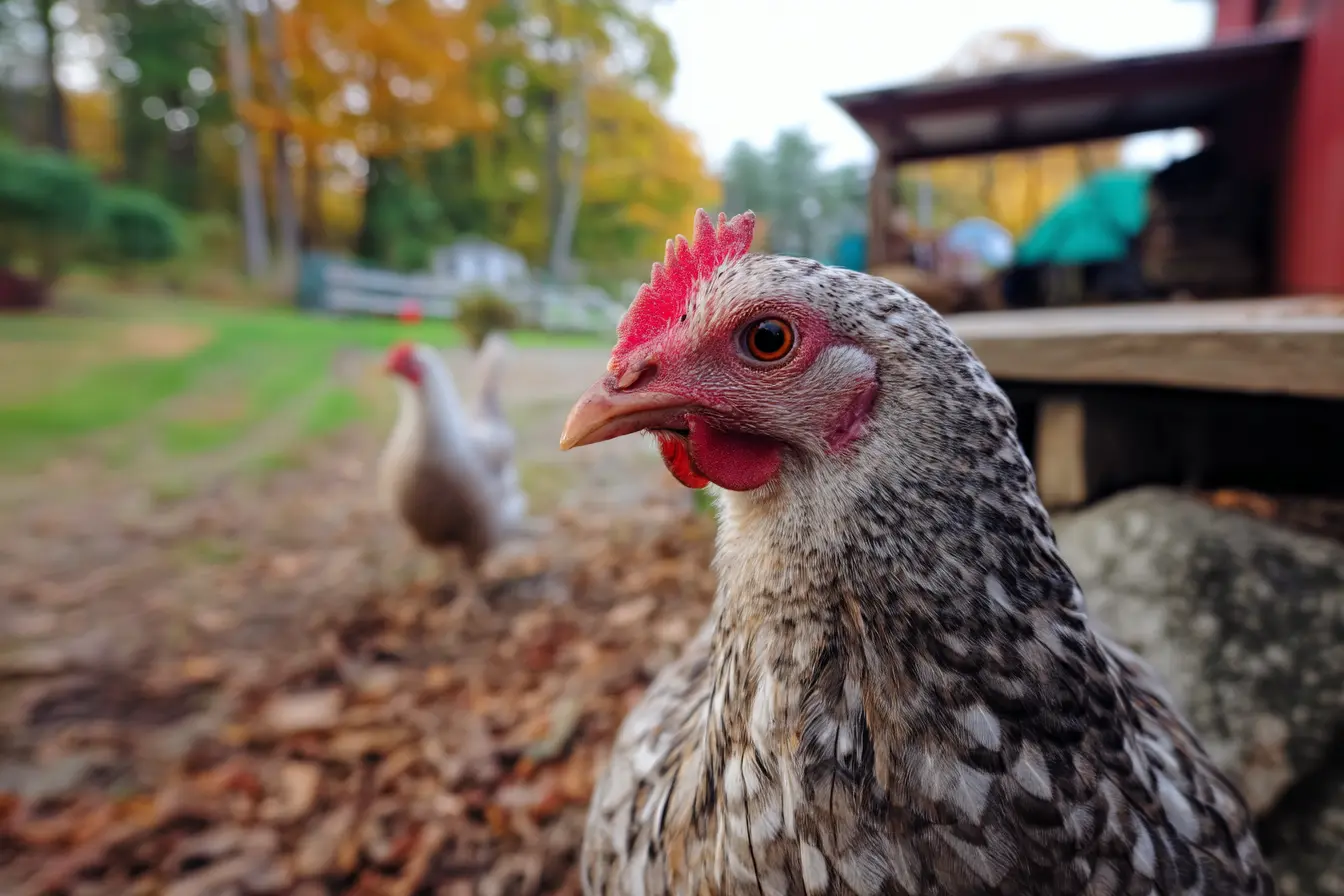
A Complete Guide to Keeping Khaki Campbell Ducks
Khaki Campbell ducks are an excellent choice for poultry keepers in the UK, known for their exceptional egg-laying abilities, hardy nature, and active personalities. Whether you're a beginner or an experienced duck keeper, Khaki Campbells are a fantastic addition to any smallholding or backyard flock.
In this guide, we'll cover everything you need to know about keeping Khaki Campbell ducks, including housing, feeding, health, and general care.
Introduction to Khaki Campbell Ducks
Khaki Campbell ducks were developed in England in the late 19th century by Adele Campbell, who aimed to create a productive egg-laying breed with excellent hardiness. The breed’s distinctive khaki-coloured plumage, coupled with their prolific laying capabilities, quickly made them a favourite among poultry keepers.
Key Characteristics:
- Lifespan: 8-10 years with proper care
- Egg Production: 250-340 white or tinted eggs per year
- Temperament: Active, intelligent, and friendly
- Size: Medium (ducks weigh around 2-2.5 kg; drakes 2.5-3 kg)
- Colour: Khaki brown with lighter underbellies and darker heads (drakes have a greenish head)
- Cold-Hardy: Well-suited to the UK climate
Why Choose Khaki Campbell Ducks?
Khaki Campbell ducks are an ideal choice for many reasons:
- Prolific Egg Layers: They are one of the best egg-laying duck breeds, often outproducing chickens.
- Hardy and Adaptable: They tolerate the UK’s variable weather well and thrive in different environments.
- Low Maintenance: They require minimal care compared to other poultry.
- Excellent Foragers: They enjoy searching for insects, weeds, and snails, helping to control pests naturally.
- Friendly and Curious: With regular handling, they can become quite sociable and make great pets.
- Quiet and Non-Flying: They are quieter than other breeds and less likely to escape from enclosures.
Housing Requirements for Khaki Campbell Ducks
Providing a safe and comfortable environment is essential to ensure your Khaki Campbells remain healthy and productive.
Duck House Requirements
- Size: Allow at least 0.3-0.5 square metres per bird inside the duck house.
- Ventilation: Good airflow is essential to prevent respiratory issues.
- Bedding: Use absorbent materials such as straw or wood shavings to keep the floor dry.
- Predator Protection: Ensure the house is secure against foxes and other predators.
- Access: Provide a low entrance as ducks prefer to waddle rather than jump.
Outdoor Space and Water Access
Khaki Campbells are active ducks and need plenty of outdoor space to forage and explore.
- Run Size: At least 2-3 square metres per bird, but more space is always better.
- Fencing: Use at least 90cm high fencing to keep them safe and contained.
- Water Source: A small pond, kiddie pool, or shallow trough is essential for them to clean themselves and stay hydrated.
Tip: Ensure water areas are easy to clean, as ducks can make them muddy quickly.
Feeding Your Khaki Campbell Ducks
A balanced diet is crucial for maintaining their health and egg production.
Essential Nutrition
- Duck Pellets (16-18% protein): A complete and balanced feed formulated for laying ducks.
- Greens and Vegetables: Lettuce, kale, peas, and other leafy greens are great supplements.
- Grit: Necessary to help grind food in their gizzard.
- Fresh Water: Ducks need access to clean water at all times to aid digestion and preening.
- Foraging: They love foraging for bugs, snails, and slugs, which supplements their diet naturally.
Feeding Tip: Avoid feeding them bread, as it lacks nutritional value and can cause health issues.
Health and Common Concerns
Khaki Campbell ducks are generally hardy, but they do require some routine health checks to stay in top condition.
Common Health Issues
- Wet Feather: Occurs when their feathers lose waterproofing; ensure they have clean water for proper preening.
- Bumblefoot: Caused by walking on rough or dirty surfaces; provide clean and soft bedding.
- Worms: Regular worming is advisable, especially if they free-range.
- Respiratory Infections: Ensure the duck house is well-ventilated and dry to prevent illness.
Preventative Care:
- Keep their environment clean and dry.
- Provide fresh water daily.
- Conduct regular checks for signs of parasites or injuries.
Khaki Campbell Duck Behaviour and Handling
Khaki Campbells are naturally active and inquisitive birds that enjoy exploring their environment.
- They are not as tame as some other duck breeds, but with regular interaction, they can become friendly.
- They do well in mixed flocks and get along with chickens and other duck breeds.
- They prefer foraging over confinement and love exploring gardens and ponds.
Handling Tip: Approach them slowly and consistently to build trust. Offering treats like peas can help tame them over time.
Egg Production and Collection
One of the biggest advantages of Khaki Campbell ducks is their incredible egg-laying ability.
Egg-Laying Habits
- They usually begin laying at around 5-7 months of age.
- Expect 5-6 eggs per week from each duck.
- They are not known for broodiness, so if you wish to hatch eggs, an incubator may be required.
- Their eggs are excellent for baking and have a rich flavour.
Egg Collection Tip: Ducks tend to lay their eggs early in the morning, so check their nesting area daily.
Winter Care for Khaki Campbell Ducks
Khaki Campbells are well-suited to the UK’s colder climate but need extra care in winter.
- Insulated Housing: Provide extra bedding such as straw to keep them warm.
- Water Management: Prevent water sources from freezing by using heated drinkers or checking regularly.
- Extra Feeding: Increase their food intake slightly to maintain energy levels in the cold.
- Mud Control: Ducks can create muddy areas; using gravel or sand in their run can help.
Winter Tip: Ensure they have access to clean, unfrozen water for bathing and drinking.
Breeding and Raising Ducklings
If you plan to breed Khaki Campbell ducks, it’s important to understand their brooding tendencies.
Breeding Tips
- Khaki Campbells are not naturally broody, so using an incubator is often necessary.
- Eggs take around 28 days to hatch under optimal conditions.
- Provide ducklings with heat and access to chick (or duckling) starter crumb.
- Ensure they have access to clean, shallow water, but supervise to prevent drowning.
Growth Rate: Ducklings grow quickly and can transition to adult feed by around 6-8 weeks of age.
Legal Considerations in the UK
Before keeping Khaki Campbell ducks, check your local council’s regulations regarding poultry keeping.
- DEFRA Regulations: Stay updated on biosecurity measures, especially regarding avian flu.
- Neighbour Relations: Inform neighbours and ensure noise and cleanliness are well managed.
- Pond Regulations: If you plan to have a pond, ensure it complies with local water safety guidelines.
Conclusion
Khaki Campbell ducks are an excellent choice for UK poultry keepers looking for a hardy, productive, and friendly breed. Whether you’re keeping them for eggs, pest control, or simply as delightful backyard companions, they are sure to bring joy and utility to your home.
With the right housing, nutrition, and care, your Khaki Campbells will reward you with an abundance of eggs and charming company for years to come.
Contents
- Introduction to Khaki Campbell Ducks
- Why Choose Khaki Campbell Ducks?
- Housing Requirements for Khaki Campbell Ducks
- Feeding Your Khaki Campbell Ducks
- Health and Common Concerns
- Khaki Campbell Duck Behaviour and Handling
- Egg Production and Collection
- Winter Care for Khaki Campbell Ducks
- Breeding and Raising Ducklings
- Legal Considerations in the UK
- Conclusion
Tags
Related Vets
Vets near you
Speciality vets
- Aquatics vet specialists
- Birds vet specialists
- Camelids vet specialists
- Cats vet specialists
- Cattle vet specialists
- Deer vet specialists
- Dogs vet specialists
- Equines vet specialists
- Exotic vet specialists
- Goats vet specialists
- Pigs vet specialists
- Poultry vet specialists
- Sheep vet specialists
- Small Mammals vet specialists
- Wild vet specialists










